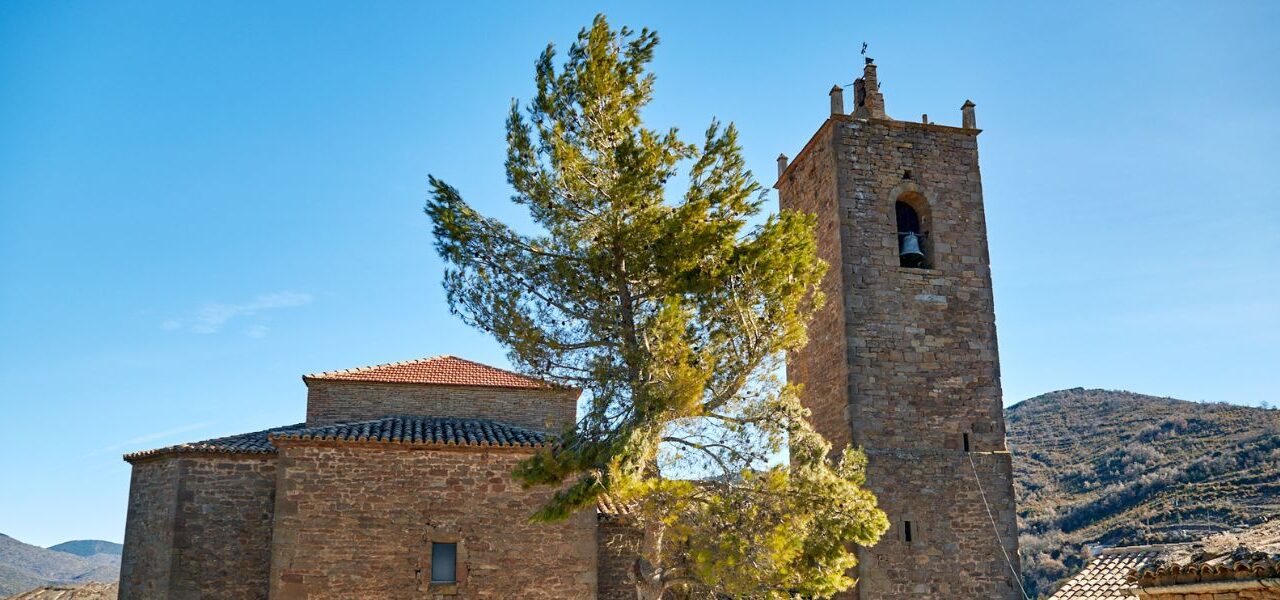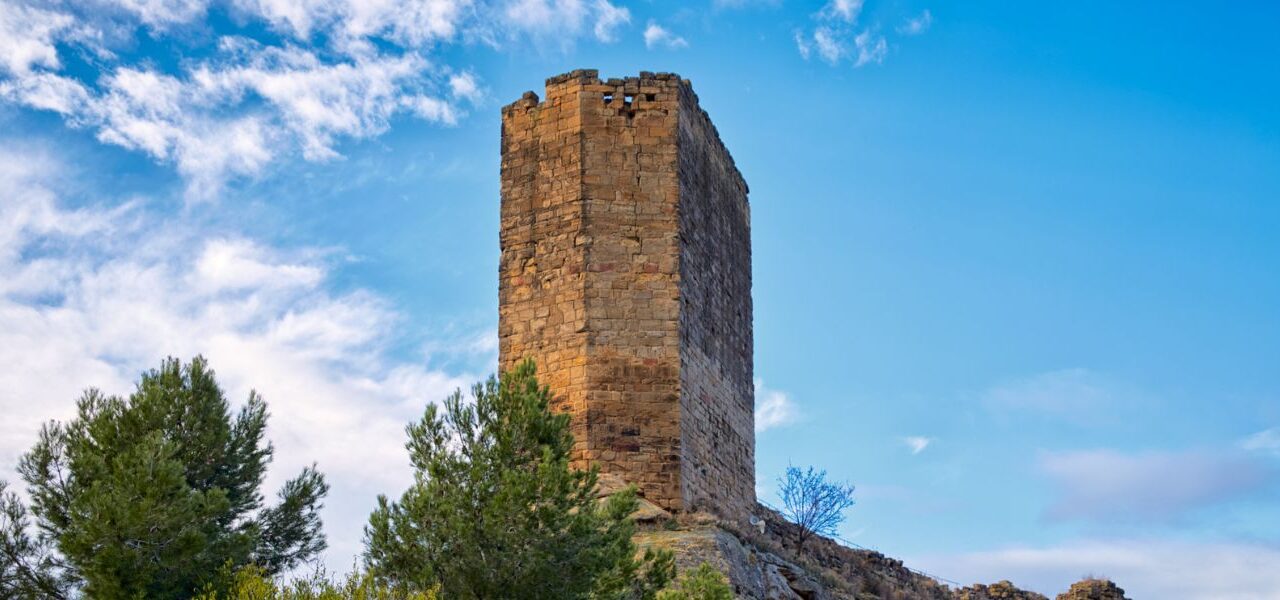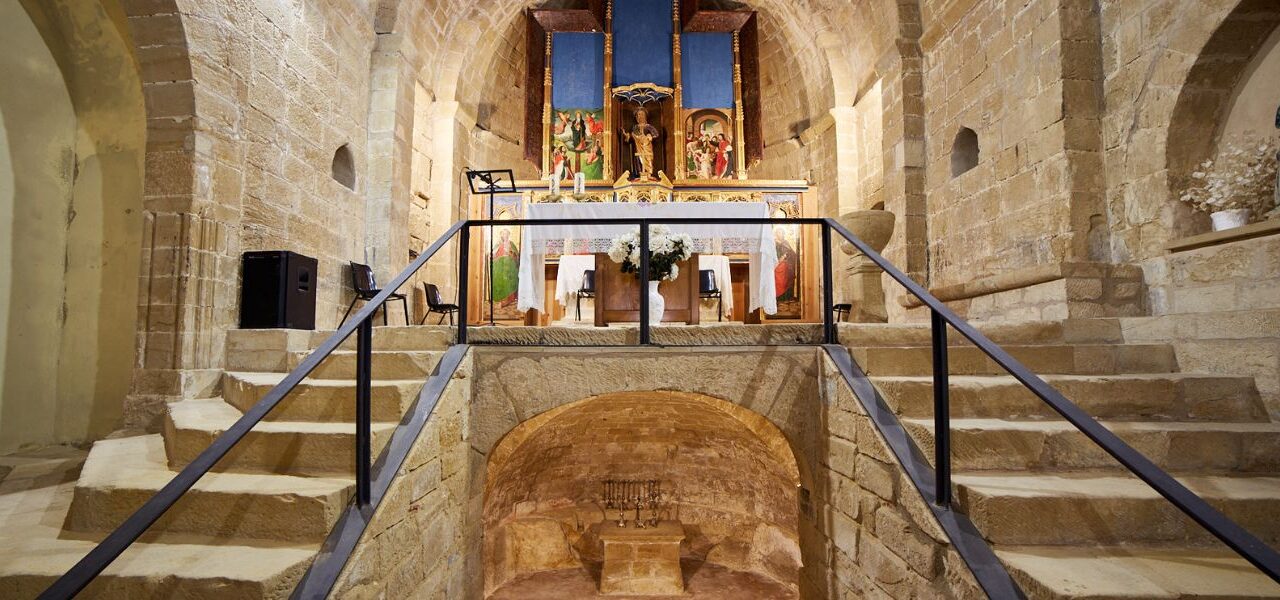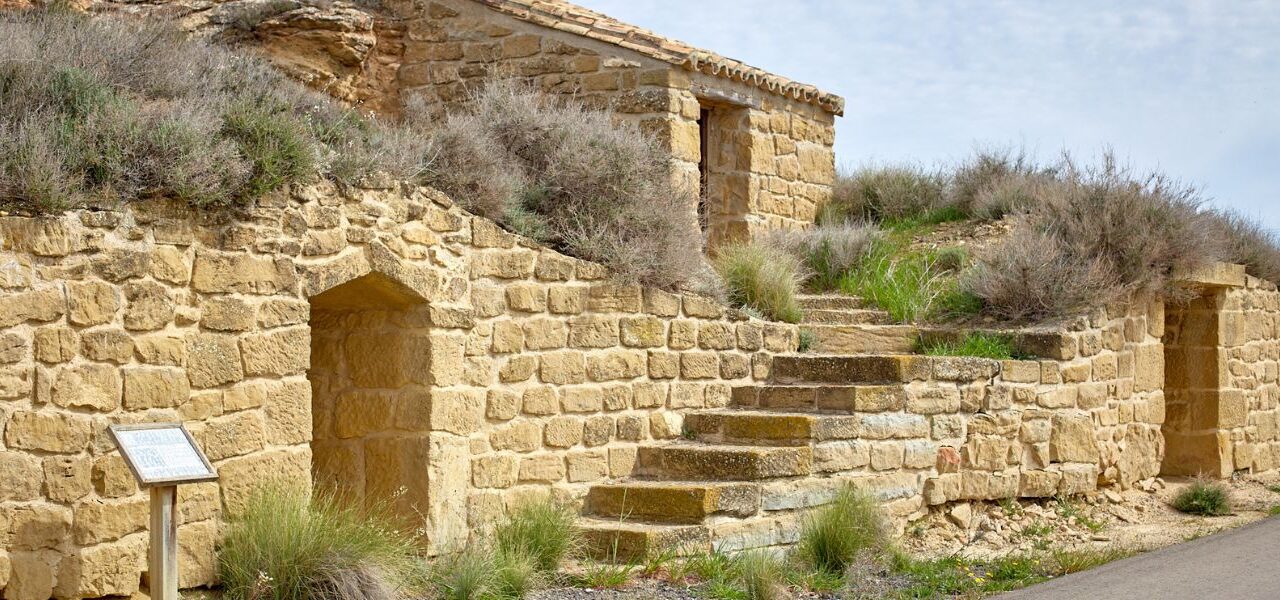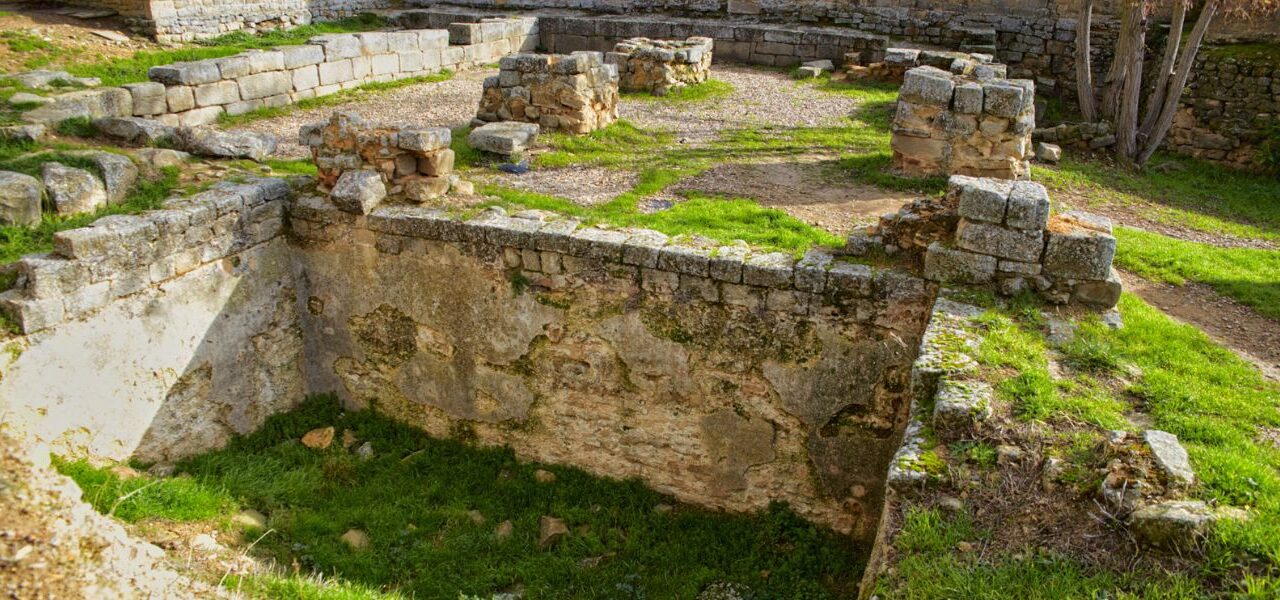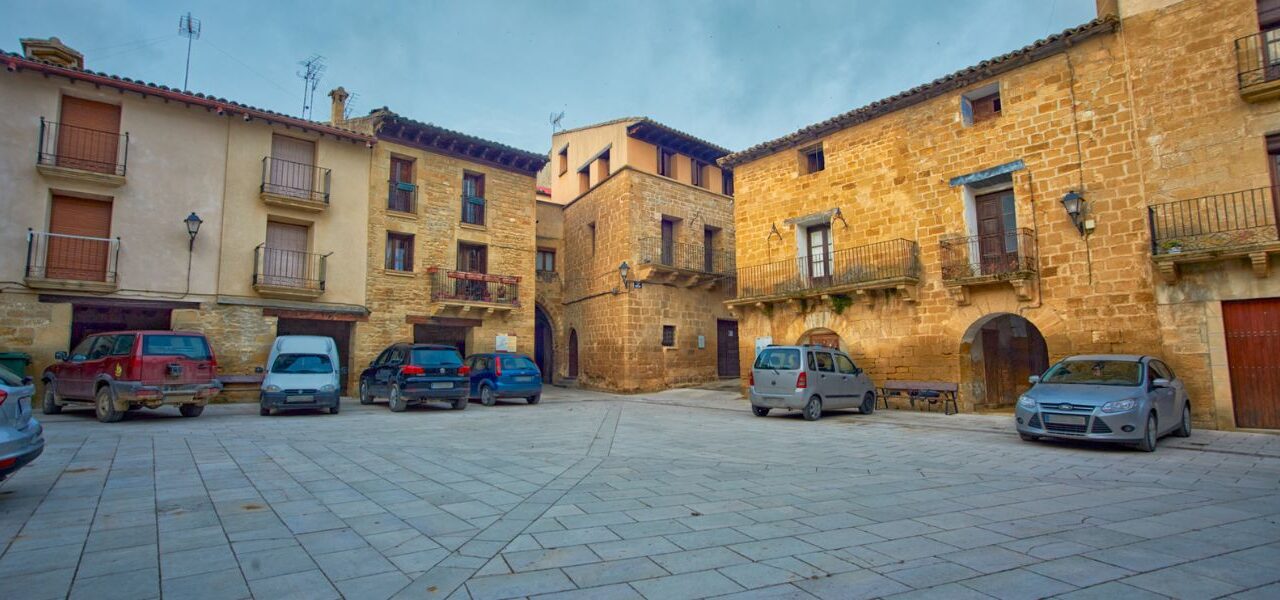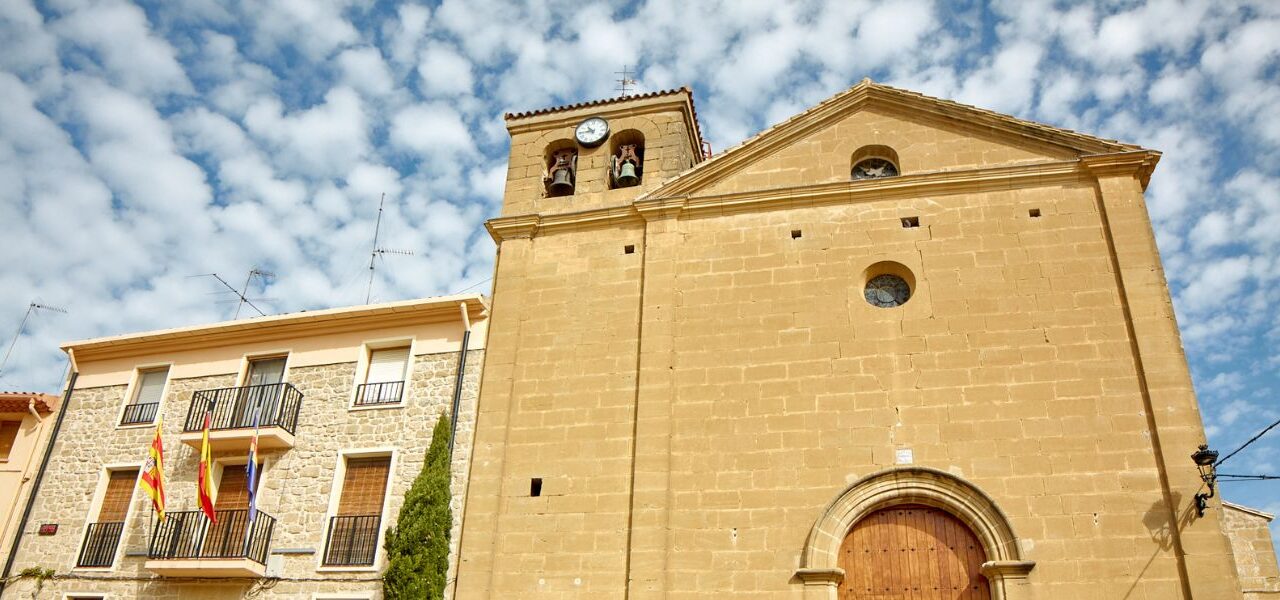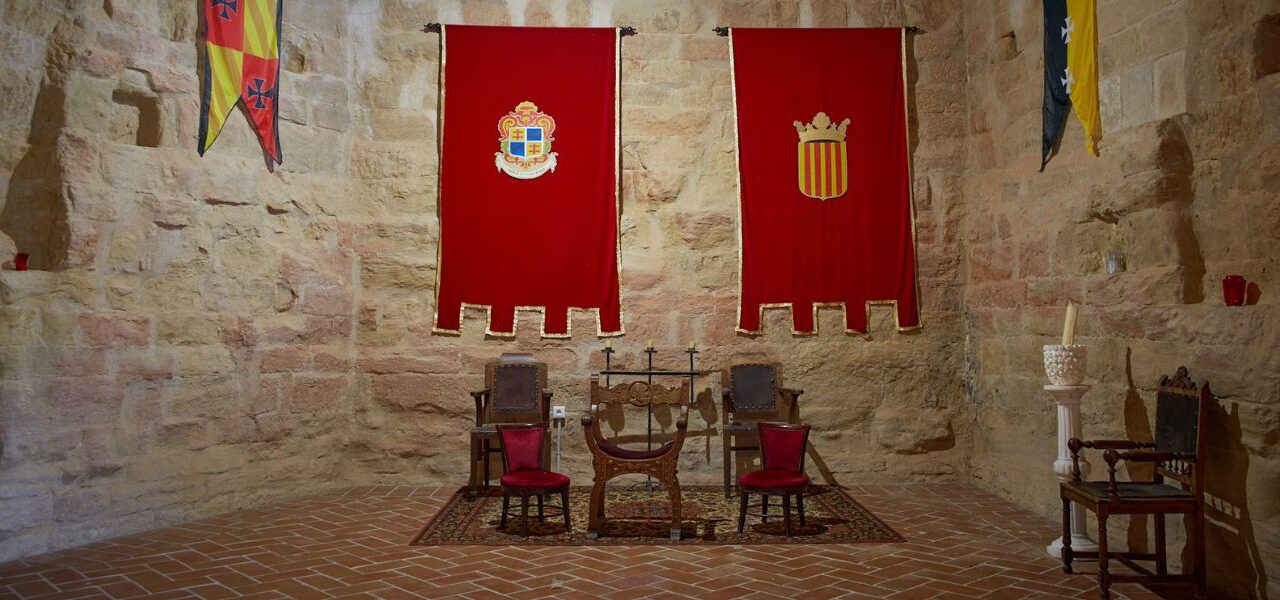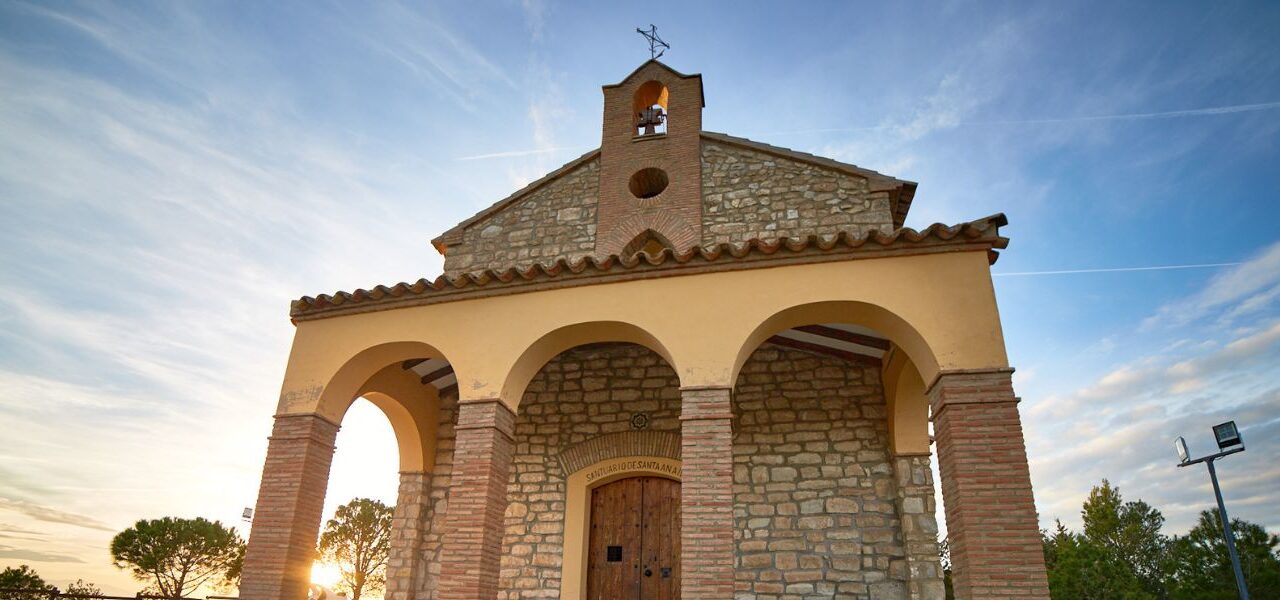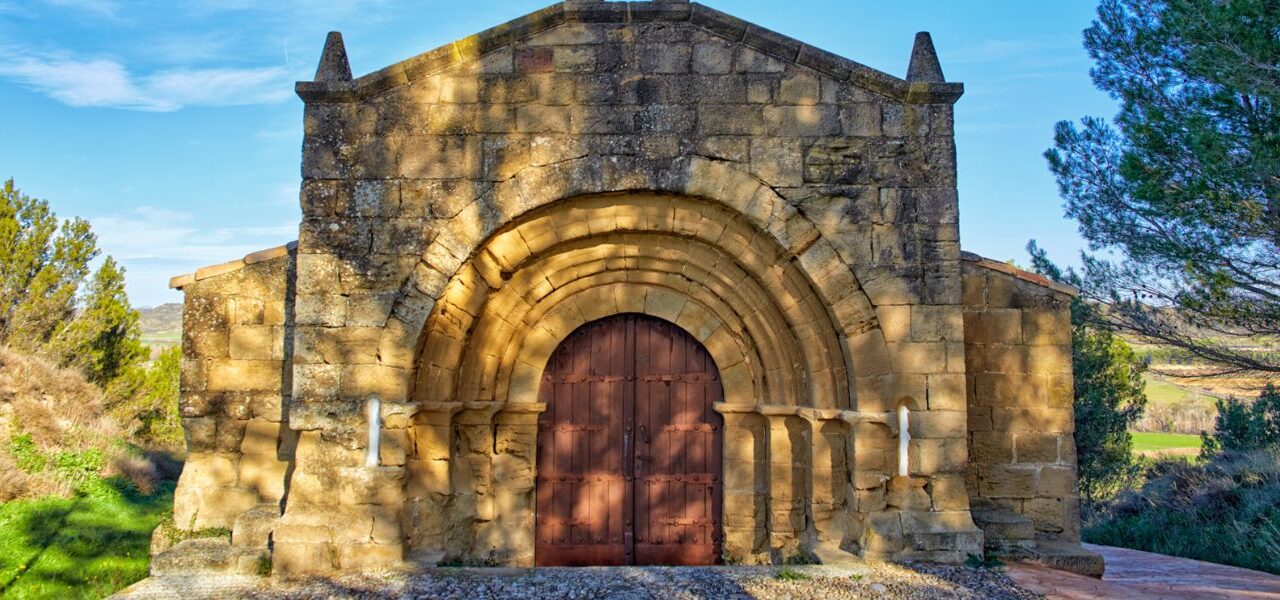Iglesia de la Asunción
Descripción Iglesia de la Asunción Destaco dentro del conjunto urbano de Lobera, edificada en lo más alto del cerro. Mi construcción en piedra sillar y aparejo se integra perfectamente con el casco urbano de la villa, manteniendo todo el conjunto urbanístico el mismo tono medieval. Si buscas bien en mis muros, encontrarás dos ventanas aspilleras, decoradas con perlas, que seguramente pertenecieron a una iglesia románica anterior. Mis orígenes son muy antiguos, puesto que queda constancia de que he sido reconstruida varias veces a lo largo de la historia. Sobre mi primitiva iglesia románica se construyó otra en estilo gótico, sobre la que fui construida a finales del s.XVII, en el estilo barroco con el que me puedes contemplar en la actualidad. Llama la atención mi torre-campanario, de planta cuadrada y con aspecto robusto. Con su altura, dividida en dos cuerpos, cumple las funciones de torre de vigilancia atalaya desde la que se divisa el valle del Onsella, y hogar de las campanas, que antaño llamaban a los fieles a la iglesia, y avisaban con su toque de los acontecimientos de la villa. En la actualidad albergo tres campanas, en cuyas inscripciones aún se puede leer su nombre, (como la de Santa Bárbara y Santa Ana), el año de fundición y el nombre del fundidor. Standing out above the urban hub of Lobera, built on the top of the hill. My ashlar stone construction perfectly combines with the rest of the town, in keeping with the same medieval style. If you look closely at my walls, you will find two embrasures, decorated with pearls, which undoubtedly belonged to a previous Roman style church. My origins go back a long way and there is plenty of evidence that I have been rebuilt several times throughout my history. On top of my primitive Roman style church another gothic one was built, which I myself was built on top of at the end of the 17th century, in the Baroque style that you see today. My bell tower is impressive, with a square floor plan and a robust design. Due to its height, it is divided into two sections, it was used as a watchtower over the Onsella Valley, as well as being home to the bells, which were used to call the townspeople to church and also to warn of any of any possible events. Nowadays, it houses three bells, whose inscriptions still show their names (in the cases of Santa Bárbara and Santa Ana), the year they were cast and the name of their founder. Construite au sommet d’une colline, je me distingue parmi les bâtiments de Lobera. Ma construction en pierre de taille et gréement se fond parfaitement dans l’ensemble architectural du centre urbain, préservant l’harmonie de son caractère médiéval. Si vous regardez attentivement mes murs, vous trouverez deux meurtrières décorées de perles qui appartenaient sûrement à une église romane antérieure. Mes origines sont très anciennes, puisqu’on sait que j’ai été reconstruite plusieurs fois au cours de l’histoire. Sur l’église romane primitive fut édifiée une autre église gothique. Je fus à mon tour construite sur celle-ci à la fin du XVIIe siècle, dans le style baroque que j’arbore aujourd’hui. Mon clocher attire l’attention, avec une structure carré et une apparence robuste. Divisé en deux corps, sa hauteur en fait une tour de guet depuis laquelle on aperçoit la vallée d’Onsella, et il abrite les cloches qui appelaient autrefois les fidèles à l’église et avertissaient les habitants des événements de la ville. Actuellement, je compte trois cloches portant des inscriptions sur lesquelles on peut encore lire leur nom (comme celle de Santa Barbara et Santa Ana), l’année de fonte et le nom du fondeur. Descargar PDF accesible Foto a Foto Vídeo en lengua de signos Compartir


